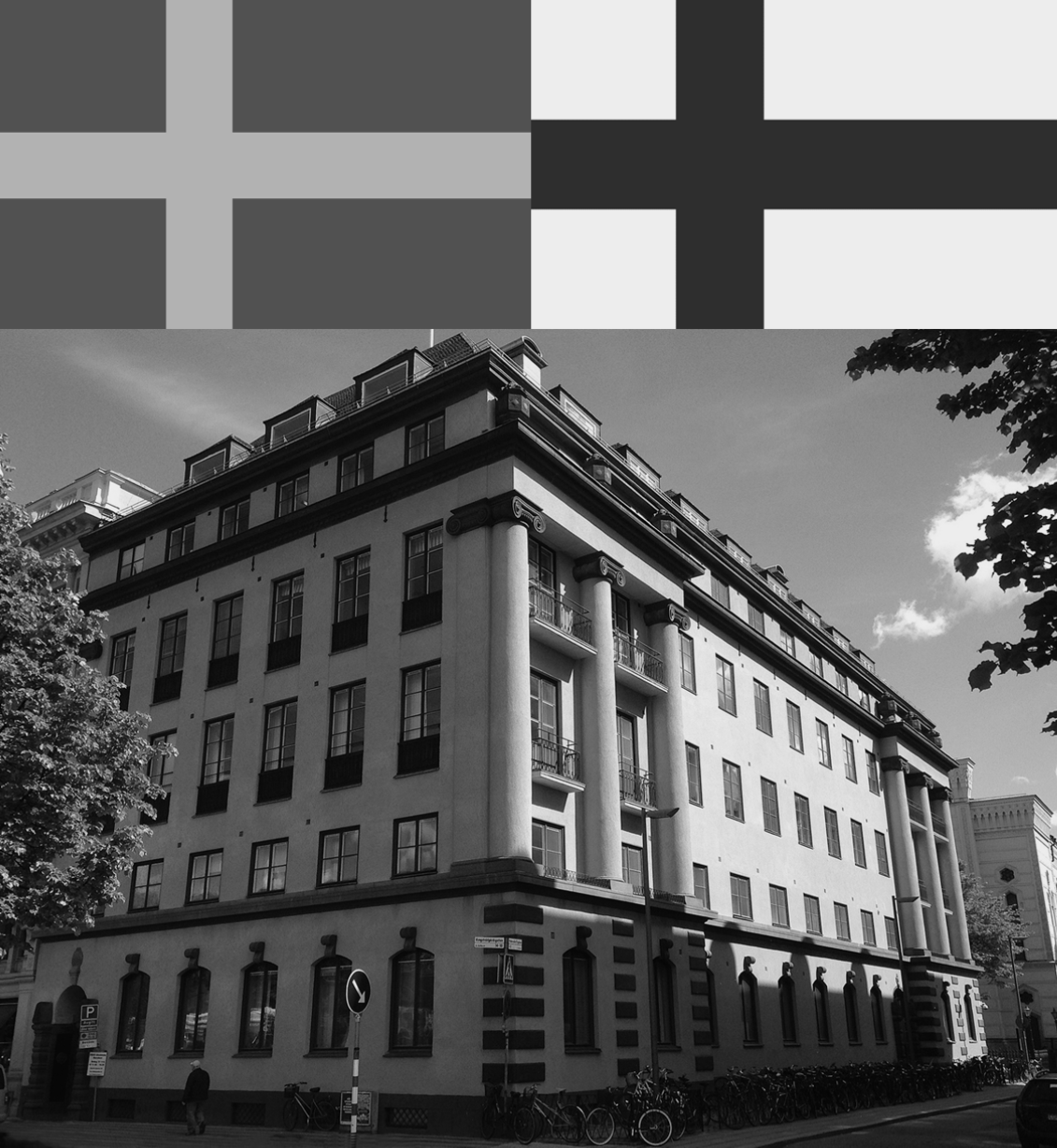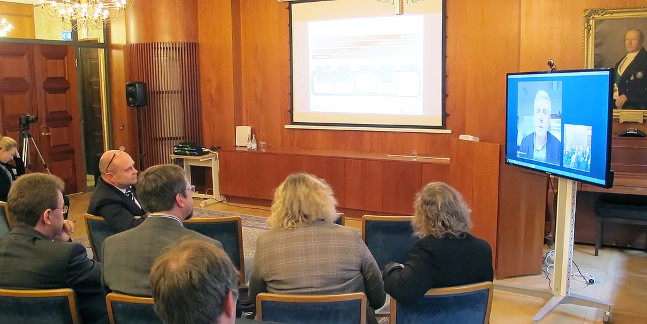A meeting with Finnish and Swedish steel specialists

The conference Metal Production and Sustainable Opportunities was organized jointly by Jernkontoret and its Finnish counterpart Metallinjalostajat. It was held at Jernkontoret in Stockholm on the 4th and 5th of November 2015 and brought together representatives from among others SSAB, Outokumpu, Ovako, Höganäs, Sandvik, University of Oulu, Swerea MEFOS, FIMECC (Finnish Metals and Engineering Competence Cluster), the Stockholm Environment Institute and the University of Cambridge.
When Kimmo Järvinen, Managing director of Metallinjalostajat, after two days summarized the conference, he did it with the words:
- “But remember. The work has just begun”.
This outlook, a typical example of Finnish "sisu", combined with Sweden's ability to implement long-term strategy was what he meant is the way forward. Because the primary focus of this conference was Swedish-Finnish cooperation.
On the morning the day before, scientists and representatives of the Swedish and Finnish steel industry, as well as steel specialists and generalists gathered at Jernkontoret in Stockholm to discuss joint research and development and best ways for the two countries’ steel industries to work together towards a reduced environmental impact. As Jernkontoret's Managing director Bo-Erik Pers put it:
- "We are looking to co-ordinate steel research between Sweden and Finland. With a focus on environmental issues, resource efficiency and CO2emissions."
Similar development in Finland and Sweden
Swedish and Finnish steel companies have taken a similar path. From having produced commercial steel in the 60s and 70s they now produce highly specialized niche products for demanding applications. This specialization means that the two countries' production today complement rather than compete. As was noted during the conference: competition was further reduced by the merger of SSAB and Ruukki. After the merger last year, when representatives could sit down and go through all papers it turned out that the two companies overlapped even less than was thought initially.
Harri Kulmala from FIMECC (Finnish Metals and Engineering Competence Cluster) described the countries' need for collaboration with the words:
- "We are small fish in a big sea".
and added:
- "But shoals turn faster than a slow-moving blue whale."
Trend Spotting: 3d-printing, cloud computing, big data och crowdsourcing
The decision to become a highly niche oriented industry, had the result that both countries' steel industries today are world leaders in their respective segments. But what does it take to be a leader in the future? When discussing the future you also want to see in to it, and there were several presentations that focused on trend spotting. If specialization was the right answer to trend analysis carried out by Swedish and Finnish steel companies 30 years ago, what decisions today will create competitiveness for the industry in 2050?
Göran Carlsson, President of the Swedish industrial research institute group Swerea, is at the moment traveling across the country to talk about a recent report The Future of Industry. The report that was produced by Kairos Future on behalf of Swerea brings together experts from academia, industry and public administration to give their view on how the Swedish industry must change to survive in the future. In his presentation Göran Carlsson mentioned trends such as 3D printing, cloud computing, big data and crowdsourcing. What these trends all have in common is that they are ten years old and are already being implemented in other industries. Instead he should skip right to the point. How can the Swedish and Finnish steel industries use these techniques and approaches to create competiveness? For despite a slow start, Swedish steel companies today have all the potential to be among the leaders in 3D printing, so called additive manufacturing.
Karl Hallding, senior research fellow at Stockholm Environment Institute stood out as an even more credible trend spotter when he very clearly showed how SEI together with steel representatives have worked to identify strategies to reach the goal that nothing but socially beneficial products are produced at Swedish steel companies after 2050. By using possible scenarios and setting them against each other the workshop group had been able to find combinations that will make companies better prepared to meet future opportunities and risks.
 Instead of flying around the world to lecture on how to reduce CO2 emissions, Julian Allwood, Professor of Engineering and the Environment at the University of Cambridge, attended via Skype.
Instead of flying around the world to lecture on how to reduce CO2 emissions, Julian Allwood, Professor of Engineering and the Environment at the University of Cambridge, attended via Skype.
Julian Allwood, Professor of Engineering and the Environment at the University of Cambridge, participated via Skype. With a practical and functional approach, he discussed how the steel industry could reduce emissions. His work, that comes from a long term cooperation with industry, gives suggestions on how new material processes that produce effective components in low volumes could facilitate reuse and thus “get more with less”. He also spoke of a shift where the industry rather than manufacturing and supplying steel as currently should retain responsibility for the steel all the way from cradle to cradle. He envisioned that the steel industry in the future will keep product liability throughout the cycle and, as he put it, go further down the distribution chain and become even more a service supplier. As an example, a building where the company that sold the steel repossess it when the building is demolished. Mary-Louise Falkland, Outokumpu pointed out that similar thoughts lie behind the design of the Swedish fast train X2000 that has a standalone chassis that makes it easy to update the electronics for instance. Julian Allwood mentioned the book "Sustainable materials with Both Eyes Open" written by his research group "The Use Less Group". Buy or download the book for free at www.uselessgroup.org
Meeting is of course a first step for any type of cooperation, to see what each group is doing and what opportunities there are. And as Kimmo Järvinen said, “this is just the beginning”. Looking at the conference theme, Metal Production and Sustainable Opportunities, it is obvious that Sweden and Finland with their special steel are part of the solution. Both countries are world leaders and constantly develop stronger steel, and the stronger the steel, the less steel is needed when building vehicles and buildings for example, and the high strength makes the products last longer.
Participating companies impressed with their work to broaden their services and continue to deliver unique high-strength steel throughout the world. Joint research will increase financing and that both countries now are more familiar with each other’s research will favor work towards more efficient processes and products that provide more environmental benefits.
So what is the next step? Perhaps to dive deeper into the trends and take the opportunity to test the scenarios on all participating stakeholders. Julian Allwood’s example to focus on creating services, combined with ideas inspired by circular economy where you “rent” steel in a specific shape for a certain time and then hand it back for remelting reminds of a Swedish innovation. Spotify founded in 2006 turned the music industry upside down with their service. Previously you had to buy a music product. Now you subscribe to a flow. Without owning it. It’s only a simple example. But it is not impossible that there will be an equally improbable idea that will shape the future of the steel industry. If you google Steelify.com you are greeted by the text "steelify.com is a totally awesome idea still being worked on. Check back later". Someone is already working on it.
Text and image, Peter Börjeson
